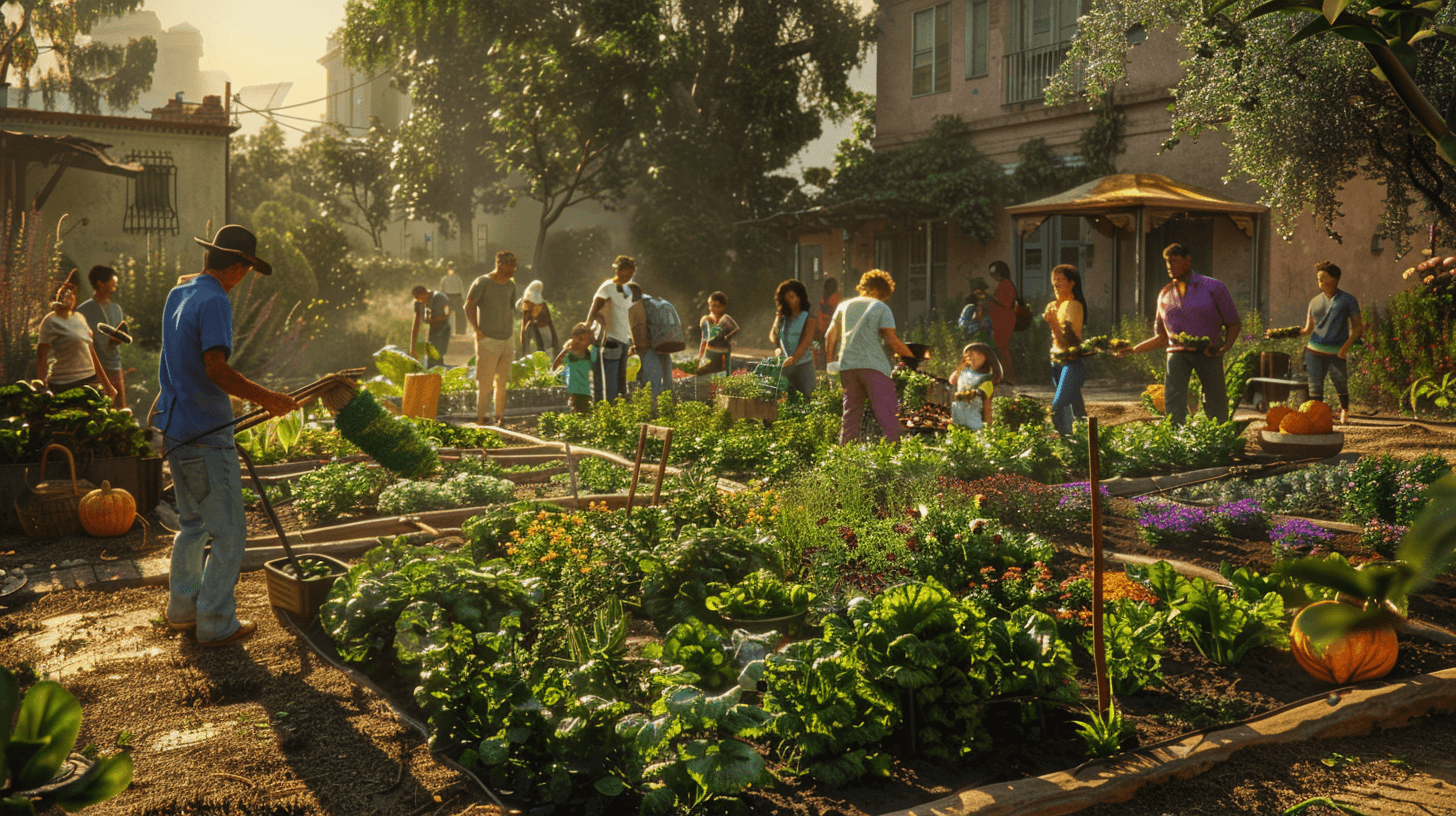Introduction: The Enigmatic Web of Interconnectedness

Have you ever wondered how a flutter of a butterfly’s wings in Brazil could potentially cause a tornado in Texas? This iconic illustration of chaos theory, often known as the butterfly effect, is not just a poetic reflection but a gateway to understanding the profound concept of interconnectedness. Such questions pull us into the fascinating world where everything you know is subtly linked to everything else, forming a complex and interwoven tapestry of existence.
What if the same forces that cause distant weather patterns also weave through the fabric of our social interactions, economic systems, and personal well-being? Interconnectedness isn’t an abstract idea reserved for scientific debate; it is a fundamental principle observed across various disciplines, including physics, philosophy, and spirituality. In physics, it manifests as theories that describe the fundamental particles of the universe; in philosophy, it explores the existential questions of being and reality; and in spirituality, it provides a profound understanding of unity and oneness that transcends the physical boundaries of existence.
This concept’s relevance stretches far beyond the academic; it shapes the complexities of the universe, influences societal structures, and enriches personal relationships. It encourages us to consider not just the immediate effects of our actions but the ripple effects that reach into distant corners of the world and aspects of life.
The purpose of this article is to embark on a rich exploration of diverse perspectives on interconnectedness, spanning from ancient texts to modern theories. By delving into this theme, we will uncover how these insights not only deepen our understanding of the world but also guide our actions within it. Join us on this journey to unravel the intricate connections that shape our universe, our societies, and ourselves, setting the stage for a deeper inquiry into the interconnectedness of all things. Through this exploration, we aim to educate, inspire, and mesmerize, inviting you to view the world through a lens that sees not just entities, but connections.
Infinite Threads: Unraveling the Interconnectedness of Life
Philosophical Roots of Interconnectedness

As we peel back the layers of time, how have thinkers across ages woven the concept of interconnectedness into the fabric of philosophical thought? This journey into the past reveals a rich tapestry of ideas that transcend time and geography, binding human thought in a shared quest to understand the deep connections that underpin our existence.
Ancient Philosophies and Interconnectedness
The Stoics of ancient Rome, like Marcus Aurelius, preached a universe bound by a common law, where rationality and nature intermingle, shaping our duties and destinies. In his reflections in “Meditations,” Aurelius mused on the notion that “All things are interwoven, and the bond is sacred; nothing is isolated but all is interconnected, and thereby bound together.” This Stoic idea emphasizes a cosmos where human actions influence the whole, echoing the responsibilities we hold towards the collective.
Moving East, Taoism, articulated by Laozi in the fundamental text “The Tao Te Ching,” presents a universe where dualities—light and dark, soft and hard—play out their differences yet are unified in the same cosmic dance. Laozi’s teachings underscore the flow of life as an interconnected stream where all actions reverberate across the environment, influencing and shaping each other in endless cycles.
Buddhism further enriches our understanding of interconnectedness through the teachings of interconnected causality or dependent origination. This principle asserts that all phenomena exist only because of the interplay of various causes and conditions—nothing exists in isolation. The insights from Buddhist texts and monastic teachings encourage a mindful recognition of the interconnected nature of suffering and compassion, urging an ethical lifestyle that acknowledges the impact of one’s actions on the global canvas of life.
Modern Philosophical Dialogues
Transitioning into modern times, the thread of interconnectedness continues to be a pivotal theme among contemporary philosophers. Figures like Thich Nhat Hanh have bridged ancient Buddhist thought with modern concerns, emphasizing the idea of “interbeing”—that one cannot exist without the other, and that our actions are deeply interwoven with the fabric of the universe. His works, alongside modern discussions in environmental philosophy and ethics, expand our understanding of interconnectedness, pushing us to rethink how our lifestyles, economics, and societal structures are fundamentally tied to the well-being of our planet and each other.
Bridging Ancient Wisdom with Modern Insights
This section has explored how philosophical thought from different eras and regions conceptualizes the intricate web of life and existence. By highlighting key texts such as “The Tao Te Ching,” “Meditations,” and the writings of Thich Nhat Hanh, we connect ancient wisdom with modern insights, making the age-old concept of interconnectedness accessible and compelling for you, the reader.
Through this exploration, we reveal the profound depth and relevance of philosophical discourse on interconnectedness, showcasing its enduring impact on how we perceive the world and our place within it. As we reflect on these teachings, it becomes clear that understanding and embracing interconnectedness is not merely an intellectual exercise but a vital lens through which to view our relationships, responsibilities, and the collective future of our world.
Scientific Perspectives on Interconnectedness

How does modern science unravel the mysteries of interconnectedness that philosophers and spiritual leaders have pondered for centuries? This exploration into the realm of science reveals the empirical evidence supporting the profound unity underlying our world, as observed through quantum physics, ecology, and biology.
Quantum Physics: The Dance of Entanglement
Quantum physics offers one of the most striking scientific validations of interconnectedness through the phenomenon known as quantum entanglement. In this bizarre yet fundamental aspect of quantum mechanics, particles become so deeply linked that the state of one (no matter how far apart) instantaneously influences the state of another. This suggests that at the subatomic level, space and distance might not be as definitive as once thought. Such findings not only challenge our classical understanding of the universe but also echo the ancient philosophical idea that all elements within the universe are intimately connected.
Ecology and Biology: Systems Thinking
Shifting from the micro to the macro, the field of ecology provides another lens through which to view interconnectedness. The Butterfly Effect, a term popularized by meteorologist Edward Lorenz, illustrates how small changes in initial conditions can lead to vastly different outcomes. This sensitivity to initial conditions can be seen in weather patterns, ecosystem dynamics, and even in human societies, suggesting a world where local actions can have global repercussions.
Furthermore, the Gaia Hypothesis, proposed by scientist James Lovelock, envisions Earth as a self-regulating, single organism. This theory posits that biological processes are interlinked with the physical and chemical environment, forming a complex, synergistic system that maintains the conditions for life on the planet. Through this lens, Earth itself is a living example of interconnected systems operating in harmony to sustain life.
Bridging Science and Philosophy
Influential works such as Fritjof Capra’s “The Web of Life” and James Lovelock’s explorations of the Gaia theory have not only advanced scientific understanding but have also woven these insights into a larger philosophical context. These texts merge scientific rigor with philosophical reflection, highlighting how deeply interconnected our existence is—from the smallest particle to the largest living systems.
Spiritual and Religious Interpretations

In the rich tapestry of spiritual and religious beliefs, the concept of interconnectedness emerges as a profound cornerstone, revealing the intricate links that bind all beings across diverse traditions. This section delves into how major world religions—Hinduism, Christianity, and Islam—encompass this universal thread within their doctrines, offering insight into how interconnectedness is both a spiritual imperative and a practical guideline in understanding the unity among all creations.
Conceptual Overview
Interconnectedness in the spiritual and religious realm serves as more than just a philosophical notion; it is a vital component of living. For example, in Hinduism, all life is seen as a manifestation of the divine, implying a fundamental connection between all forms of existence. Christianity teaches that all humans are created in the image of God, suggesting a shared divine essence that links every individual. Similarly, Islam emphasizes Ummah, or community, underscoring the interconnected nature of all followers under the submission to Allah.
Comparative Analysis
Though each religion articulates it differently, the core idea of interconnectedness pervades through Hinduism, Christianity, and Islam with distinct nuances. Hindu texts often discuss the oneness of the universe through the concept of Brahman, the ultimate reality connecting all forms of existence. In contrast, Christianity may focus more on the interpersonal connections fostered through love and compassion, as taught by Jesus. Islam, meanwhile, often stresses the social bonds that are reinforced through shared practices and communal worship, promoting a sense of brotherhood and unity among all Muslims.
These varying perceptions significantly influence the behaviors and beliefs of their followers. For instance, the Hindu emphasis on universal oneness can lead to a strong ethic of non-harm and respect for all life forms. Christian teachings about interconnectedness through love inspire charitable acts and forgiveness. Islamic views of unity might emphasize social justice and the importance of community support.
Textual Evidence
Influential texts from these religions richly illustrate themes of interconnectedness. The Bhagavad Gita (Hinduism), for instance, speaks of the soul’s immortality and its inherent connection to all beings: “Just as one sun illuminates the whole world, so does the one soul illuminate the entire body” (13.33). In Christianity, the Bible offers verses like 1 Corinthians 12:12-27, where Paul discusses the Church as one body with many parts, each necessary and connected to the others. The Quran, in Surah Hujurat (49:13), reminds believers, “O mankind, indeed We have created you from male and female and made you peoples and tribes that you may know one another.”
Psychological and Sociological Impacts

In understanding the concept of interconnectedness, we see profound influences on both individual behaviors and the broader societal structures. This section delves into how the awareness of our ties to others can foster empathy, fuel altruism, and reshape the communities we build.
Behavioral Influences
Psychologically, the realization of interconnectedness can fundamentally alter individual behaviors. Studies in psychology have shown that when individuals perceive themselves as part of a larger whole, they are more likely to exhibit empathy and engage in altruistic behaviors. For instance, research by the American Psychological Association links a heightened sense of interconnectedness with increased compassionate responses to those in distress. Further, experiments have demonstrated that individuals with a strong awareness of their interconnected nature are not only more cooperative but also more likely to engage in actions that benefit others at a cost to themselves. This shift in perspective from ‘I’ to ‘we’ encourages prosocial behaviors that are crucial for societal wellbeing.
Societal Structures
On a sociological level, interconnected thinking has substantial implications for community building and global citizenship. It encourages the development of societal structures that prioritize collective welfare and sustainable practices. For example, in communities where interconnectedness is a core philosophy, there tends to be a stronger push towards social responsibility and environmental stewardship. Interconnected thinking supports the notion of global citizenship, where individuals consider the global implications of their local actions, fostering a sense of responsibility towards a worldwide community.
Case Studies and Examples
To illustrate the principles of interconnectedness in practical settings, we can look at the example of Scandinavian welfare systems, particularly in Sweden and Denmark. These countries have adapted their social welfare models to enhance efficiency and sustainability in response to contemporary challenges. Despite reductions in public expenditure, the overall commitment to welfare—encompassing health, education, and social protection—remains robust. This demonstrates a deep-seated understanding of the interconnectedness between government policy, individual well-being, and societal health.
Sweden and Denmark have pursued reforms that aim not merely to cut costs but to optimize service delivery. For instance, the introduction of new IT systems has enabled more efficient public service administration, such as tax declarations via simple text messages in Sweden. These reforms are part of a broader strategy to maintain high levels of public service amid demographic changes and economic pressures.
This case exemplifies how understanding and applying interconnectedness in governance can lead to more resilient and adaptive systems. These countries have recognized the necessity of evolving their welfare models to remain effective and supportive, ensuring that despite economic fluctuations, the welfare of the populace remains a priority. This approach reflects a sophisticated appreciation of how closely policy decisions are linked to individual and collective outcomes, illustrating the practical application of interconnected principles in governmental policy-making (academic.oup) (Public Finance Focus).
Reflect on your own life: how has recognizing your interconnectedness with others influenced your actions and relationships? Has it changed how you contribute to your community or how you perceive your role within larger societal structures? Consider whether this awareness could lead you to make more informed decisions that reflect not only your interests but also the well-being of your community and beyond.
Literature Review

As we explore the multifaceted theme of interconnectedness, this literature review offers a selection of pivotal books that shed light on this profound concept from various perspectives. Each book has been chosen for its ability to deepen our understanding and appreciation of interconnectedness through philosophical inquiry, scientific discovery, spiritual reflection, and practical application.
Introduction to Literature
The books reviewed here are categorized into four key themes—philosophical, scientific, spiritual, and practical. Each category enriches our understanding by presenting interconnectedness not just as a theoretical idea, but as a living, breathing reality that impacts all aspects of life and knowledge.
Philosophical Texts
Philosophically, interconnectedness challenges our perceptions of self and other. “The Web of Life” by Fritjof Capra explores how all living and non-living components of the Earth system are linked. Capra, blending deep ecological awareness with systemic thought, argues that understanding these connections is crucial for addressing contemporary ecological crises. “Totality and Infinity” by Emmanuel Levinas discusses the ethical implications of interconnectedness, particularly the responsibility we hold towards ‘the Other’ in a connected universe. These works underscore the philosophical shift from individualism to a holistic perspective.
Scientific Explorations
Scientifically, interconnectedness is seen in the entangled nature of quantum particles to the vast networks within ecosystems. “Linked” by Albert-László Barabási delves into network theory, showing how everything from the internet to human cells operate on networks. “The Hidden Life of Trees” by Peter Wohlleben enchantingly describes how trees in a forest are interconnected, supporting one another through complex networks. These books not only expand our understanding of interconnectedness but also how we perceive our relationship with the natural world.
Spiritual Insights
Spiritually, interconnectedness is a recurring theme in many religious and mystical traditions. “The Tao of Physics” by Fritjof Capra draws parallels between the interconnected views of Eastern mysticism and Western physics, providing a transformative look at the cosmos and our place within it. “The Essential Rumi” translated by Coleman Barks, offers insights into the Sufi concept of unity with the divine and all creation, emphasizing the spiritual journey towards understanding and embracing this unity.
Practical Applications

Understanding interconnectedness goes beyond theoretical musings; it has profound implications for our daily lives, educational systems, policies, and professional environments. In this section, we explore how the principles of interconnectedness can be practically applied to foster a more cohesive, responsible, and sustainable world.
Daily Life Integration
Incorporating interconnectedness into everyday life can reshape our interactions and decisions. For example, a heightened awareness of how our actions affect others and the environment can lead us to choose sustainable products, reduce waste, and engage more actively in our communities. This conscious living extends to relationships, where recognizing the interconnectedness of our emotions and actions can foster deeper empathy and understanding among individuals.
Educational Applications
Integrating interconnectedness into educational curricula can transform the way young people view the world. By teaching students about the interconnected nature of global systems—ecological, economic, social—they learn the importance of personal responsibility in a global context. Educational programs that emphasize interconnected thinking can help students develop a holistic understanding of global issues like climate change, global health, and international relations, preparing them to make informed, conscientious decisions.
Policy-Making
In policy-making, interconnectedness can lead to more holistic and sustainable approaches. Policies that consider the interconnected effects of environmental, social, and economic factors tend to be more effective in the long term. For instance, urban planning that incorporates green spaces is known to improve public health, reduce pollution, and enhance community well-being. Policymakers are encouraged to adopt frameworks that assess impacts across various sectors to ensure that decisions benefit the broader system.
Professional Domains
In the professional sphere, interconnected thinking can revolutionize business, healthcare, and public services. Businesses that recognize their role in larger economic and ecological systems tend to adopt more sustainable practices, which can also drive innovation. In healthcare, understanding the social determinants of health can lead to more effective and equitable health outcomes. Public services, when designed with an interconnected approach, can more effectively address the needs of diverse communities.
Organizational Examples
Organizations like the World Wildlife Fund (WWF) and local community-supported agriculture (CSA) programs exemplify the philosophy of interconnectedness. WWF’s efforts to conserve nature and reduce the most pressing threats to the diversity of life on Earth demonstrate how global and local actions are deeply connected. CSAs support local farmers while providing communities with fresh produce, strengthening local economies and reducing environmental impact.
Reflect on how embracing interconnectedness could change your personal and professional life. Are there changes you could make to your daily routine that would reflect a more interconnected approach? How could your workplace benefit from these principles? Consider steps to cultivate a mindset that recognizes and acts on the connections you share with others and the environment.
Through these explorations, this section aims not just to inform but also to inspire active engagement with the concept of interconnectedness. By understanding and applying these principles in various aspects of life, readers can contribute to a more interconnected and sustainable future, enriching both their own lives and the world around them.
The Future of Interconnectedness

As we approach the conclusion of our exploration into the theme of interconnectedness, it is vital to project into the future and speculate on the potential trends and developments that could further shape our understanding and application of this profound concept. The future of interconnectedness is likely to be driven by technological, ecological, and philosophical advancements, each playing a critical role in weaving a more connected world.
Emerging Trends
The advent of artificial intelligence (AI) and network analysis is set to revolutionize our understanding of interconnected systems. These technologies can help us decipher complex data patterns and improve the efficiency of our networks, from traffic systems to ecological conservation efforts. Big data and the Internet of Things (IoT) are particularly poised to enhance our ability to perceive and manipulate interconnected networks, making it possible to manage resources more effectively and respond to crises more rapidly.
Technological Developments
Future technological advancements are expected to significantly influence our grasp and utilization of interconnectedness. Enhanced communication technologies, for example, could further shrink the global divide, fostering a more interconnected society. Meanwhile, the evolution of renewable energy technologies is likely to be crucial in creating sustainable networks that not only power our cities but also interlink them in efficient and environmentally friendly ways.
Ecological and Philosophical Shifts
As society embraces interconnectedness more deeply, we anticipate significant ecological and philosophical shifts. Climate change initiatives, for instance, could benefit enormously from an interconnected approach that considers global ecological systems as interdependent. Philosophically, there could be a renaissance that places greater value on holistic and systemic thinking, reshaping our approach to ethics, governance, and education, promoting a worldview that emphasizes our shared destiny and collective responsibilities.
Importance for Future Generations
Advancing our understanding of interconnectedness is crucial for future generations. Educating young people about interconnected dynamics prepares them to tackle global challenges more effectively, from climate change to international relations. It equips them with the mindset to think globally and act locally, understanding that their actions have far-reaching implications.
Reflect on how these potential developments in interconnectedness might impact your life, both personally and professionally. What role might you play in supporting a future that leverages interconnectedness for the betterment of society? How can you contribute to fostering a world that values deep connections between its people, their environments, and the technology that binds them?
Conclusion: The Interwoven Strands of Our Future
As we conclude “The Tapestry of Unity,” we reflect on the intricate and profound connections that bind the fabric of existence, explored through philosophical, scientific, spiritual, and practical lenses. This journey into the realm of interconnectedness reveals how deeply entwined our lives are with the larger cosmos, influencing everything from the atomic to the celestial scale.
Recap of Key Insights
We began with the philosophical roots of interconnectedness, exploring ancient and modern thoughts that view the interconnected nature of reality as fundamental. From Stoicism to Buddhism, the philosophical perspective provides a foundation for understanding how everything is part of a larger whole. The scientific exploration deepened this understanding, with theories like the Butterfly Effect and the Gaia Hypothesis illustrating how interconnected our ecological and physical world systems are. The spiritual interpretations offered insights into how religions perceive interconnectedness, with texts and teachings emphasizing our spiritual bonds with all beings. Finally, the practical applications section discussed how these concepts can be actively applied in policy-making, education, and daily personal actions to foster a sustainable and cooperative society.
Reflect on how this concept of interconnectedness alters your view of the world. How does understanding that you are part of a vast, interwoven network influence your relationships, both personal and professional? Consider how this perspective might change your approach to community involvement, environmental responsibility, and global citizenship.
I encourage you to dive deeper into the books and ideas discussed throughout this article. Apply the concept of interconnectedness in your life by participating in community projects that aim to bolster local interconnectivity, advocate for policies that recognize and utilize these connections, or implement practices in your professional field that promote holistic, systemic thinking.
Imagine how a deeper collective understanding of interconnectedness could benefit future generations. Envision a world where systemic thinking guides education, where policy-making is rooted in ecological and social interdependencies, and where individuals actively contribute to a sustainable and equitable global community. Consider your role in this transformative process and how you can help foster an environment that appreciates and builds on the interconnectedness of all things.
This conclusion is not merely an end but a gateway to further exploration and action. By understanding and embracing the interconnected nature of our world, you are equipped to make impactful changes that resonate across the globe, laying down the groundwork for a future that recognizes the deep ties that bind us all. Let this understanding inspire you to forge paths that lead to personal growth and societal betterment, ensuring that the tapestry of our collective future is as rich and interconnected as the universe itself.







